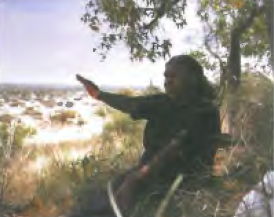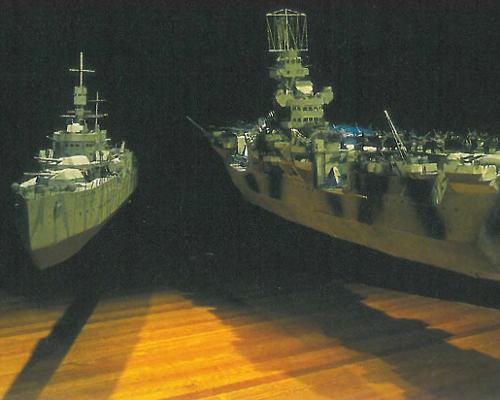
It is both a rare and delightful experience to enter a gallery of contemporary art and immediately be transported into a space of contemplation. Genius of Place: The work of Kathleen Petyarre has that power. It is not without cause that Petyarre has been compared to Turner or Rothko; there is the same complexity through restraint and reduction, an extraordinary understanding of colour, a real lyricism to her painting and the sense of capturing the almost visionary. But Petyarre also speaks to us of her unique experience as an indigenous Australian woman, exploring her heritage and her land. The vision that Petyarre gives us is not a universal one, but it resonates in a way that almost seems to embrace the viewer into her dense patterning. So this is a generous art as well, allowing us to turn our contemplation inward as well as out; we are transfigured not just into the ethereal, but also, and firmly, into a distinctive experience of land.
Kathleen Petyarre explores her Dreaming narrative of Arnkerrth, the Thorny Devil Lizard or Old Woman Mountain Devil. The Arnkerrth Dreaming is the dreaming of the Atnangker country and in her painting Petyarre shows us how the Dreaming, Arnkerrth, and the land, Atnangker, are intimately, inseparably, connected. Through the movements of Arnkerrth, movements expressed both spatially and temporally, the land is shaped and defined. As a custodian of the Arnkerrth Dreaming, Petyarre has permission to represent her dreaming ancestor and through her art she creates a sense of timelessness; Arnkerrth walks still, endlessly mapping, marking and indeed delineating the landscape.
There are many possible ways to reproduce a landscape – as map, photograph, impression. There are even more ways of remembering or seeing a space; it shifts in time, through experience, through the filter of memory. It may be felt more than seen; densely populated with occurrence, ritual and rhythm. It is this type of landscape – heavy with collective and individual memory – that Petyarre alludes to. As her paintings shift in focus, from detail to whole, and through time, as seasons shift, after hailstorms or sandstorms, so we are gifted with a fullness of experience marked and shaped by the movements of the Mountain Devil Lizard and Petyarre's careful use of rhythm and repetition. It is as though the deliberate layering of paint that is Petyarre's technique (done with, in a lovely multicultural touch, satay sticks) also echoes and nods at the layering of meaning and the temporal in her land.

It may seem to us at first that meaning, the shape of these works, is elusive. Are we looking at a map, a representation, a story, a memory? Yes, and more. Petyarre's paintings have something of the imprint about them. As she imprints on canvas, so her paintings seem almost like an after-image, an imprint, when we close our eyes and remember a space so well known that we can no longer represent it without a multiplicity of experiences and meanings pressing and layering on the image as well. In some ways when thinking about Petyarre's art it seems easier to construct a set of binaries. Simple, yet also complex and full of depth; subtle yet vibrant, her art employs the traditional yet is simultaneously absolutely contemporary; representational and abstract, repetitive yet also richly diverse. It is in the slippage between these binaries that Petyarre's work and her skills are located.
This is highlighted by the thoughtful hang in the upper gallery of the MCA. It allows us to see a chronological development of her work from early batiks to her current, breathtaking, paintings, and the on-going exploration of her Dreaming heritage. We can view the exhibition as a whole, take in the connections between her works, watch the landscape ebb and flow from close-up to distance. We can follow the tracks of Arnkerrth or the fall of bush seeds. Or we can focus on a single work with its commanding presence on the wall and journey through the layers of meaning that it contains.
Genius of Place is both an intelligent and beautiful exhibition, and while the idea of beauty might be somewhat out of currency in the contemporary arts, there is simply no word more apt. The opportunity to see Petyarre become more assured in her style as it is refined and strengthened (even through the claims of fraud that her career has had to weather), and to be absorbed into the many dimensions of Atnangker country, is to witness one of our foremost artists: a woman in absolute command of her skills and vision.












